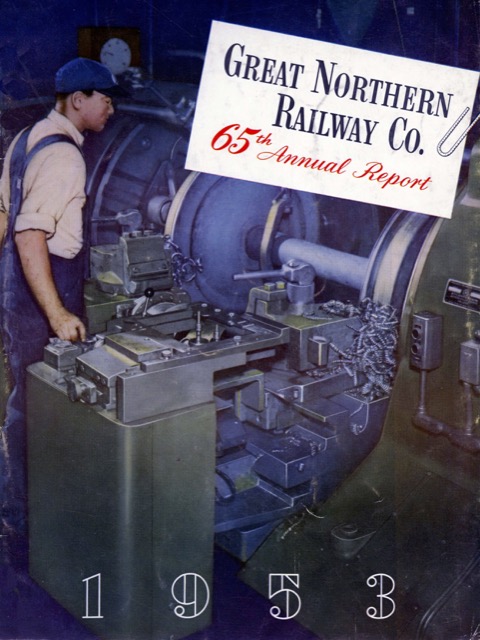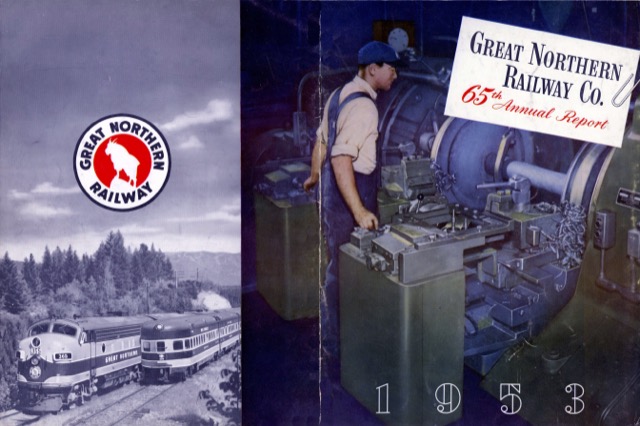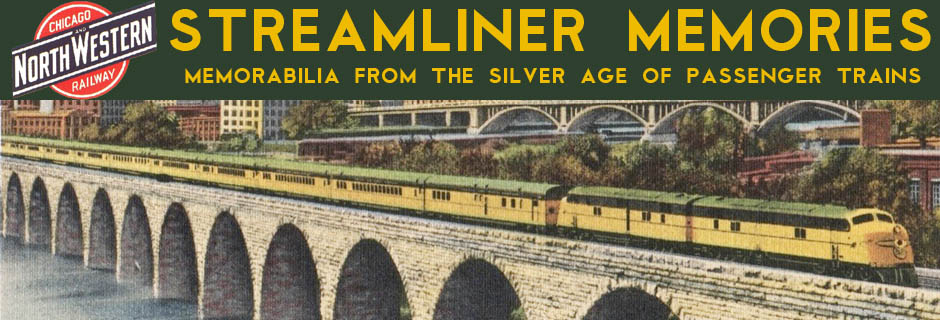The cover photo of this report shows a machinist turning a wheel, an important job on a railroad but not one likely to bring a flutter to a potential investor’s heart. The photo wraps about 2-1/4-inches around the back cover, so I’m showing the entire spread below.
 Click image to download a 17.9-MB PDF of this 28-page report.
Click image to download a 17.9-MB PDF of this 28-page report.
The rest of the back cover is devoted to a photo–unfortunately black-and-white–of two Western Stars passing somewhere in Montana. A similar photo was in the 1951 annual report, and looking at them closely, I think they are both the same photo but the train on the right has been cut-and-pasted to change its location relative to the train on the left. Notice the train on the right doesn’t cast a shadow on the other train as it does in the 1951 photo.
The Western Stars passed one another near Columbia Falls, MT, while the Empire Builders passed one another near Havre. It would have been nice to see a photo of the Builders, with their gian observation windows, passing, but perhaps western Montana was the more scenic location.
 Click image to download a 1.2-MB PDF of this cover spread.
Click image to download a 1.2-MB PDF of this cover spread.
In what was perhaps an unconscious echo of GN’s “two great trains” slogan, the centerfold celebrates “two great basins”: the Columbia River basin and the Williston basin. This seems a bit redundant as the Columbia Basin was in the centerfold and two additional pages in the 1952 annual report while the Williston Basin received a page in that report and one in the 1951 report. In the face of declining iron ores in Minnesota, I supposed the railway wanted to emphasize parts of the system whose business was growing.
